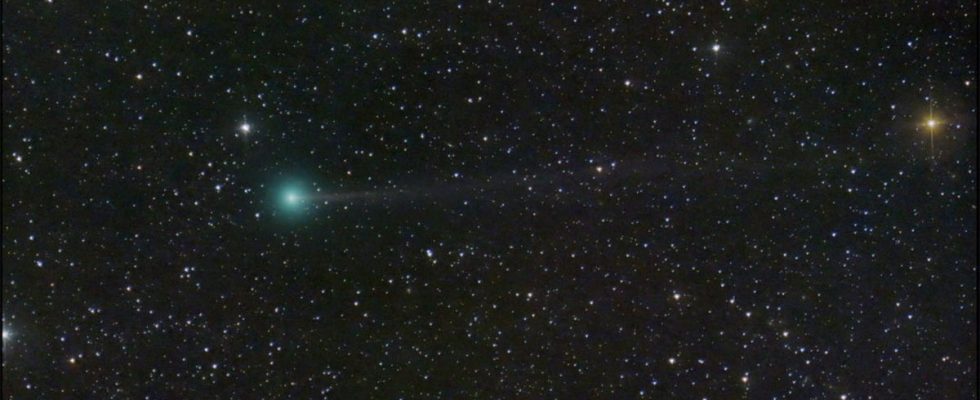Green comet “Nishimura” can now be seen in the night sky over Germany
It was only discovered on August 12, and now it can also be seen in the night sky over Germany: The green comet “Nishimura” can currently only be observed with binoculars. But onlookers have to get up early.
2 mins
The image shows comet C/2023 (green), also known as «Nishimura». Onlookers currently have a good chance of seeing a green comet again when the sky is clear. © Dan Bartlett/dpa
Heppenheim. Onlookers currently have a chance to see a green comet again when the sky is clear. According to the Association of Star Friends, comet C/2023 was only discovered by Japanese amateur astronomer Hideo Nishimura on August 12 and is currently moving towards the sun. With binoculars or a camera with a telephoto lens, C/2023 – also known as “Nishimura” – can currently be observed in the morning northeast sky.
According to the star friends, comets are always good for surprises – perhaps “Nishimura” will increase its brightness even more. The celestial body will reach its closest proximity to the sun on September 17th. Then it is less than 40 million kilometers away from the star in the center of our solar system. “Possibly he will dissolve in the process,” says the star friends.
Advertisement
Which historical plague once raged on Königstein Fortress and left its terrible mark?
Königstein was considered impregnable. But what was probably the worst plague of all time also found its way to the fortress.
As recently as February, the green comet C/2022 E3 (ZTF) was seen on one of its rare rendezvous with Earth. This celestial body only passes by the earth every 50,000 years. The green color comes from a gas produced by heating near the sun. C/2022 E3 (ZTF) is so named because it was first seen from an observatory in the United States last year as part of the Zwicky Transient Facility program.
Coming from the extreme and frigid edge of the solar system, comets are celestial bodies that were not consumed in planet formation. According to the DLR, they consist of dust grains, organic molecules and, because of their low temperature, frozen gases. The high proportion of volatile matter distinguishes them from asteroids. They are sometimes pushed out of their original orbit by gravity or collisions and then end up close to the sun or the earth. (dpa)

